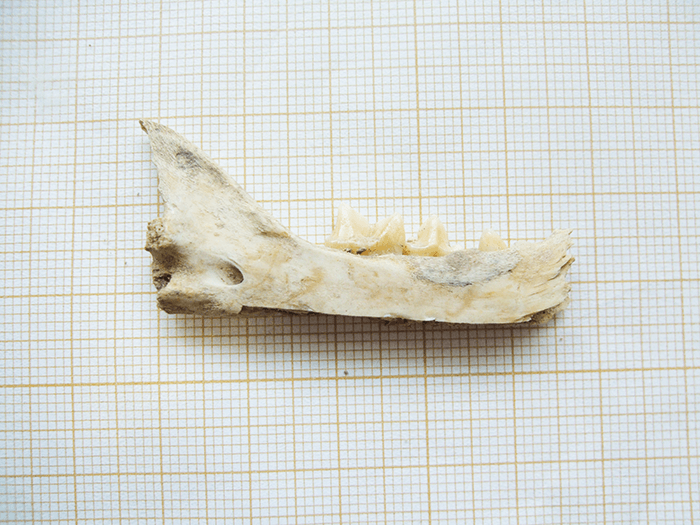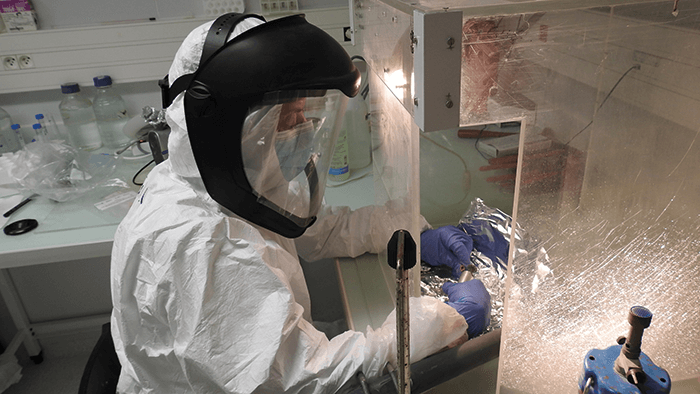The Egyptians’ love of cats is well known – and well reflected in their iconography. Now, for the first time, a large team has used a paleogenetic approach using ancient DNA analysis and direct accelerator mass spectrometry (AMS) to better comprehend the poorly understood process of feline domestication – and confirmed the role the Egyptians played. Eva-Maria Geigl (Research Director at the National Research Center CNRS Jacques Monod Institute, Paris, France) and Wim van Neer (a zooarchaeologist from the Royal Belgian Institute of Natural Sciences), have worked in the paleogenetics field for many years, retrieving DNA data from archeological samples discovered in the Fertile Crescent (Levant, northern Syria, southeast Anatolia, Iraq and northern Iran) – the heart of the feline domestication zone. “DNA preservation correlates in part to temperature (it is less well preserved in hotter climates) – not only were the cat remains old, but they were not cold,” says Geigl. “Cat bones are also small and fragile, and contain only a few small compact regions, if any, where DNA is preserved – so we knew this was going to be a challenging task!” Nevetheless, the team collected data from over 200 ancient samples from the Near East, Africa and Europe to get a global view of the cat domestication process.


Ancient DNA analysis is a painstaking process, Geigl explains. “When one extracts DNA from ancient remains, one ends up with very few, very degraded DNA molecules that need to be multiplied to be sequenced. In the past, this multiplication was done via PCR (polymerase chain reaction), which allowed us to multiply a given genetic locus but was prone to contamination by modern DNA that is difficult to detect.” To overcome this, the team concentrated on the development of experimental methods (1) to eliminate modern, contaminating DNA molecules, before dating the samples using direct accelerator mass spectrometry. They found that cats accompanied people on their journeys, from the Near East in prehistoric times and from Egypt in Classical times, slowly conquering the Ancient world. “Over time the original distribution of the mitochondrial lineages that characterize the various wildcat populations started to change,” says Geigl. “They crossed the Bosphorus (a waterway in northwestern Turkey) and started to colonize Europe. The cat could not have swum through the Bosphorus alone, so this told us that it was transported by humans.” Half the samples analyzed carried a different lineage they had not seen before elsewhere, showing that the Egyptian cat became very popular during this period. “It suggests that during the long relationship between humans and cats in Egypt, the cats acquired new features interesting to humans that other cats from Anatolia and the Levant did not have,” says Geigl. The team found the same Egyptian lineage in samples from roughly the 8th century in a Viking port in the Baltic Sea, confirming the growing worldwide popularity of this cat.
The distinctive animal was not the only feline to go on a “mews cruise,” says Geigl. “The mitochondrial signature of the Indian wildcat was found in a sample from the Roman port in Egypt (the Red Sea) that traded with India. We believe it further supports the theory that cats were on ships, probably to get rid of rodents that destroyed the food supply and navigation equipment, such as ropes, and therefore spread across the world.” In the future, the team hope to analyze the nuclear genomes in ancient cat remains to uncover the whole story of taming, domestication and admixture with wild cats.
References
- Ottoni, C. et al. “The palaeogenetics of cat dispersal in the ancient world”, Nat. Ecol. Evol. 1, (2017).




